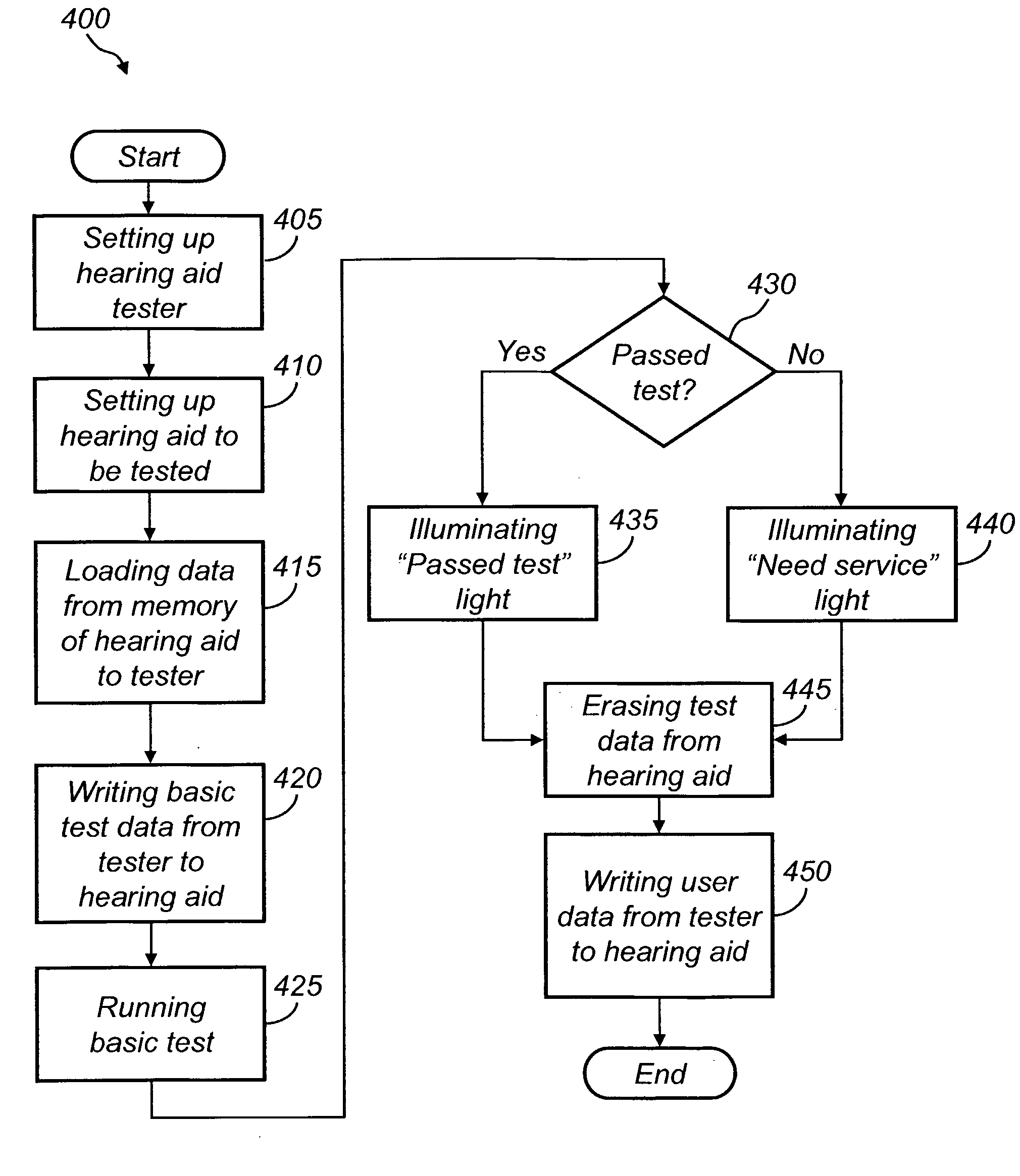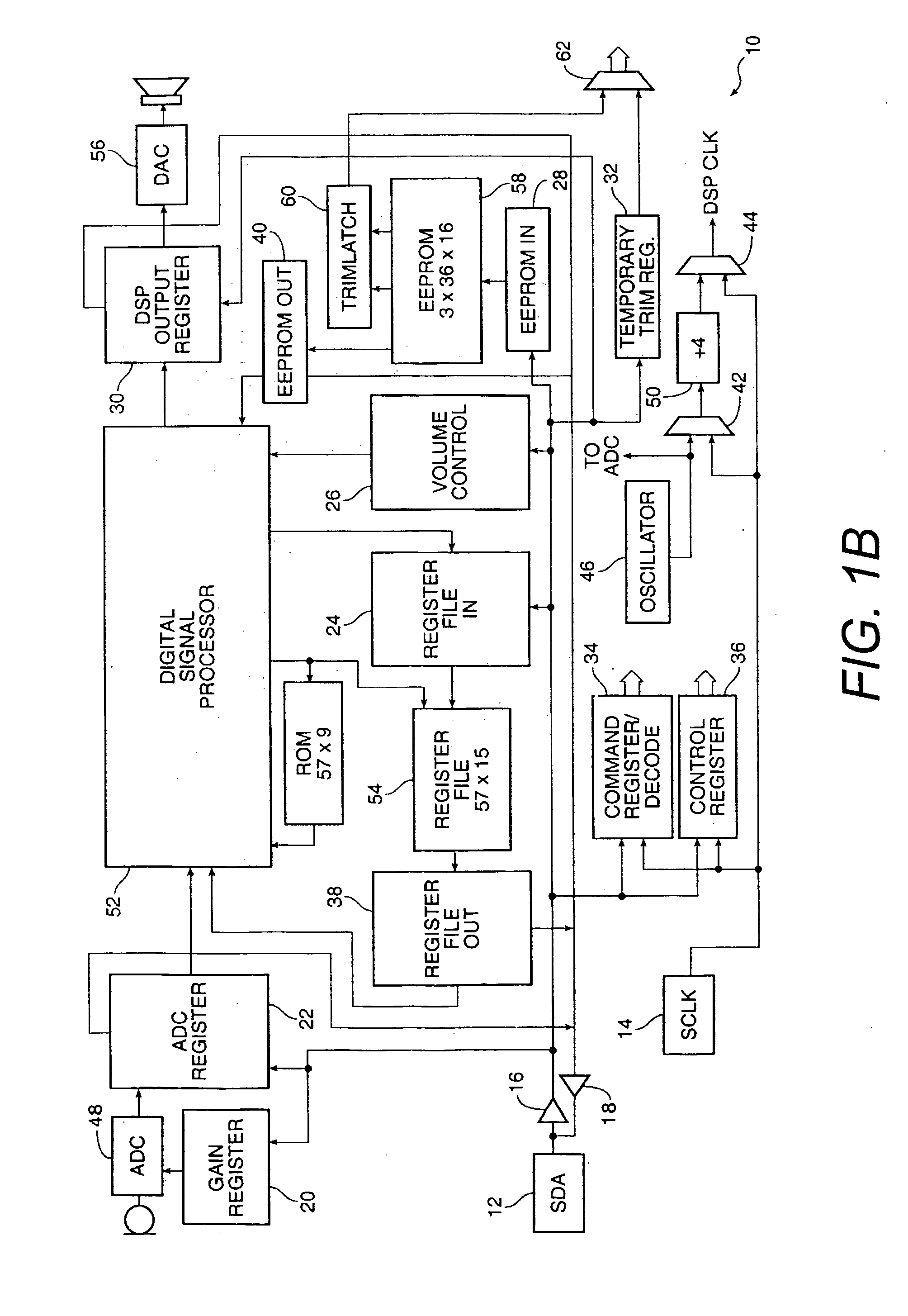At-Home Hearing Aid Testing and Clearing System
a technology for hearing aids and clearing systems, applied in hearing aid testing/monitoring, deaf-aid sets, electrical appliances, etc., can solve the problems of inability to improve the consequently ponderous process of patients, inhibit the market penetration of hearing aids, and reduce the diagnostic accuracy of patients. , to achieve the effect of simplifying the diagnostic process
- Summary
- Abstract
- Description
- Claims
- Application Information
AI Technical Summary
Benefits of technology
Problems solved by technology
Method used
Image
Examples
Embodiment Construction
[0047]FIG. 1A is a block diagram illustrating the components of a basic prior art hearing aid 100, and basic operation of a programmable hearing aid, which is programmable by a serial interface in order to be optimized for an individual patient's hearing needs and preferences.
[0048]Hearing aid 100 includes the following conventional components: a microphone 101, a pre-amplifier (pre-amp) 102, an analog-to-digital converter (ADC) 180, a digital signal processor (DSP) 103, a digital-to-analog converter (DAC) 190, an amplifier 104, an output speaker 105, a data table memory 130, an address and data bus 121, a memory 107, a controller 106, an address and data bus 120, an address and data bus 110, a plurality of input / output devices (I / O) 108, a programming connection 150, and a socket connector 151.
[0049]With hearing aid 100 in a user's ear, sound is collected as an analog signal in microphone 101. This signal is amplified using pre-amp 102, is converted from analog to digital in ADC 18...
PUM
 Login to View More
Login to View More Abstract
Description
Claims
Application Information
 Login to View More
Login to View More - R&D
- Intellectual Property
- Life Sciences
- Materials
- Tech Scout
- Unparalleled Data Quality
- Higher Quality Content
- 60% Fewer Hallucinations
Browse by: Latest US Patents, China's latest patents, Technical Efficacy Thesaurus, Application Domain, Technology Topic, Popular Technical Reports.
© 2025 PatSnap. All rights reserved.Legal|Privacy policy|Modern Slavery Act Transparency Statement|Sitemap|About US| Contact US: help@patsnap.com



